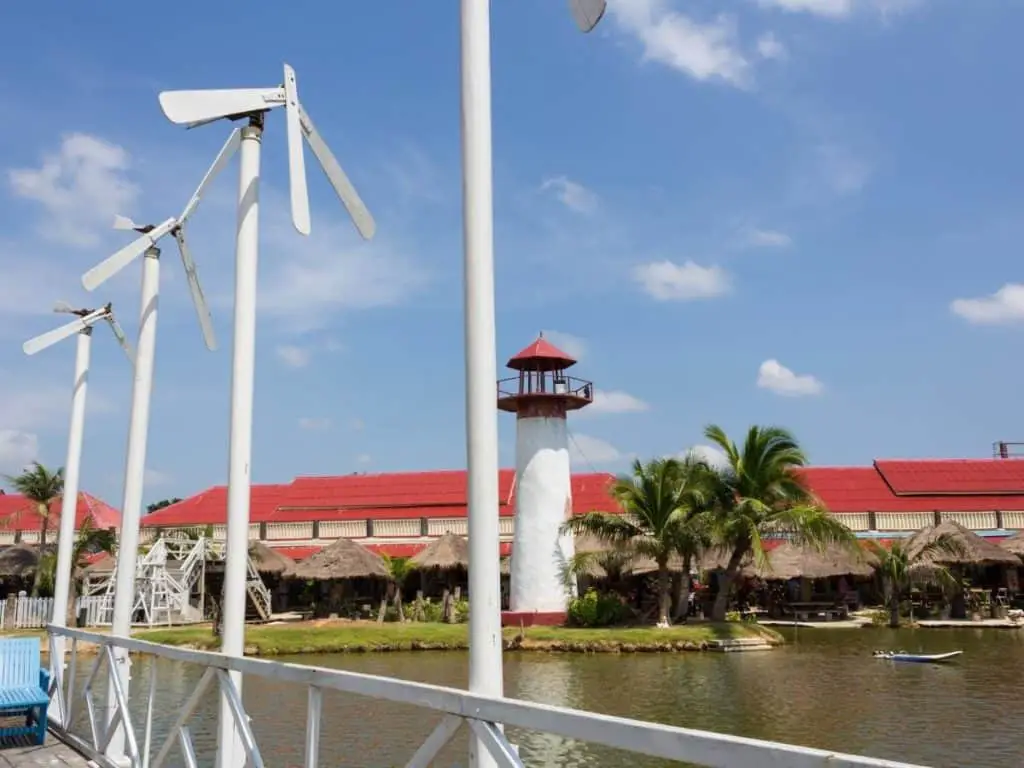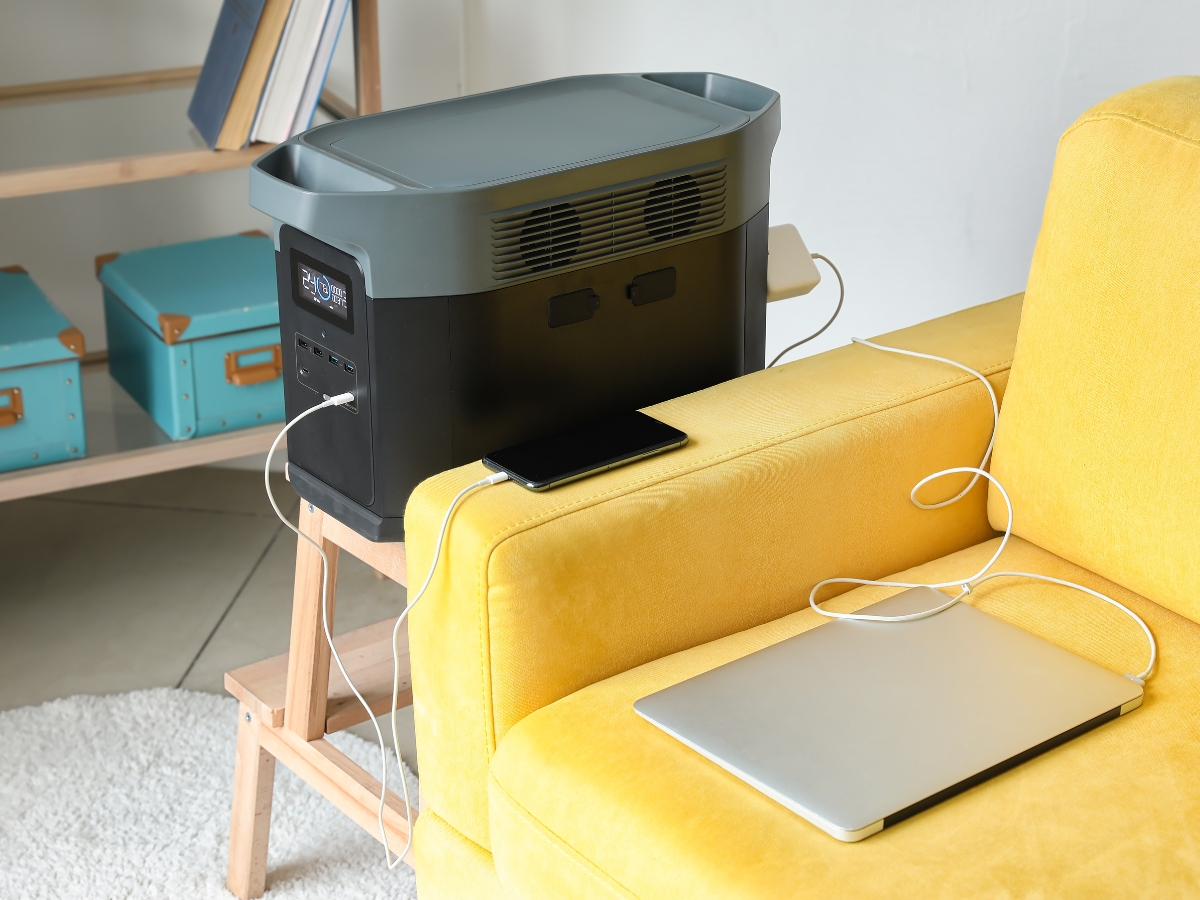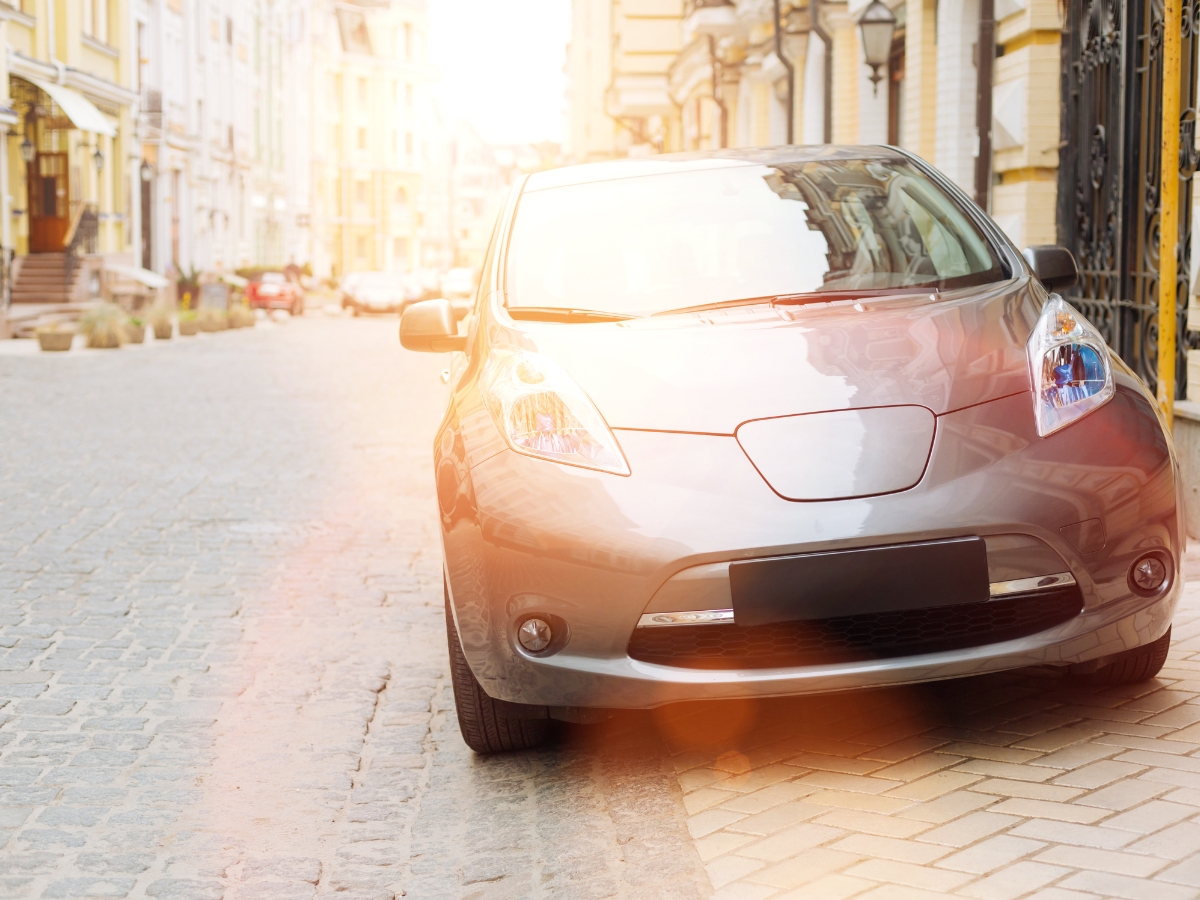Wind turbines are in use worldwide to generate clean electricity using the power of the wind. Over the years, a few different wind turbine designs have emerged, ranging from substantial industrial units to smaller systems for residential use.
There are five main types of wind turbines today and some rather unconventional designs that have emerged in various parts of the world based on wind and weather conditions. Each different design has its pros and cons to consider in terms of cost, maintenance, and efficiency.
The five main types of wind turbines are :
- Horizontal Axis Wind Turbines (HAWTs)
- Vertical Axis Wind Turbines (VAWTs)
- Darrieus Wind Turbine
- Giromill Wind Turbine
- Savonius Wind Turbine
Each of these are amazing feats of engineering, so let’s investigate each one and find out more!

The Horizontal Axis Wind Turbine System (HAWT)
These are by far the most common wind turbines found around the world. You will see them operating from open fields to ocean sites, and you may wonder how those slow turning blades generate any power at all, but don’t let that fool you!
Those turbines generate tremendous force and, using a system of gears, and a rotor can spin at very high speeds causing a large amount of electricity with each turn. They are the most efficient turbines available and the most popular.
These can reach 120m or higher heights and have more than 60m long blades while generating around 20MW of electricity.
Types Of Horizontal Wind Turbines
There are a few types of HAWT systems: the upwind turbine, the downwind turbine, and the shrouded turbine.
The Down-wind Turbine
These turbines utilize the energy of the wind flowing downwind and don’t require additional systems to be effective when it comes to maintaining alignment with the wind direction.
In this system, the wind hits the back of the blades rather than the front, and this makes the rotors more flexible as they can reduce the load of high winds and, in doing so, make the turbines lighter. A lighter turbine would take the stress off the tower in higher winds.
These turbines are not used in wind farms because the wind shade causes the power to be variable. Wind shade is where the wind decreases behind a blunt or poor aerodynamically shaped object.
In downwind turbines, the wind blows through the wind shade, and as such, they have more wind shade effects than the upwind turbines do.
The Upwind Turbine
These are the most common forms of wind turbines in the world. The wind passes over the blades and causes them to move at a very low RPM, depending on the wind speed.
Their design uses gears to increase the RPMs of the blades to a high enough level to generate electricity. The unit comes with a built-in generator, and when the wind causes the turbine to start turning at the point called the ‘cut-in’ speed, the blades will start to rotate at a very slow rate of around 13-20 RPM.
The ‘cut-in’ speed is between 6mph and ten mph and is not enough to generate electricity, but then the gear system kicks in and accelerates the rotation to between 1500 and 1800 RPMs.
The spinning blades are attached to a drive shaft connected to the generator. As the blades increase revolutions, they now have enough power to generate electricity through the generator.
These systems also have a protective mechanism that will cut the rotation of the blades should the winds get too high, as this can damage the gearbox and result in the wind turbine shutting down and requiring maintenance.
These turbines have a safe speed window, and this is where wind speeds are between 89mph and 161mph, but the ‘survival’ speed is where the turbine would shut down to prevent damage, usually around the 134mph mark.
HAWT Wind Turbine Efficiency
The most critical factors when comparing wind turbines are the cost of maintenance and the efficiency they are capable of when it comes to using the available kinetic energy produced by the wind.
Horizontal Axis Wind Turbines are currently the most efficient in producing electricity as they have an efficiency rate of between 40% and 50%. This means that they can utilize around half of the available wind energy blowing across their blades at any given time.
Using this as the standard, the best Vertical Axis Wind Turbines (VAWTs) can only get to about 40% at maximum, while Savonius only delivers around 15% efficiency.
Of course, the size of the HAWTs is considerable, with some of the more massive ones topping 180m or 590ft with blade lengths of up to 80m or 262ft.
What Is The Generating Capacity Of A HAWT?
Single turbines can produce around 2,5MW-3MW, around 6 million kWh per year, and a 3,6MW turbine could comfortably double that output.
Larger wind turbines measuring more than 600ft tall and with blade lengths of 260ft can deliver a staggering 8,8MW, and these were installed off the coast of Scotland in 2018.
A single turn could power an average American home for a day!
Direct Drive Wind Turbines
One of the biggest costs associated with wind turbines is maintenance and especially when it comes to gearbox damage. Due to the height and location of these turbines, it’s not a simple matter to go in and fix one once it breaks down.
Direct drive systems don’t have gears as they can operate from slower rotational rotor speeds, and these link the rotor directly to the generator without the need for a gearbox.
They utilize a permanent magnet-drive system with rare earth magnets( which makes them more costly to produce), and this replaces the need for the ‘gear-speed-increaser’ as it is less susceptible to breakdown.
Shrouded Turbines
These systems are also known as Diffuser-Augmented Wind Turbines, and they are designed with the blades in a ring-shaped airfoil system, which helps to increase the airflow over the blades significantly.
This would increase the efficiency of a HAWT by five times as the blades due to the massively improved airflow. The reduced turbulence and noise would also improve the generational capacity of the turbine.
The main drawback with the shrouded turbines is the cost and the fact that they cannot compete with the modern turbines. This technology has been tried time and again in the modern era, but with limited success, and while they are still around, most wind turbines are in the HAWT upwind configuration.
Vertical Axis Wind Turbines (VAWT)
As the name implies, these wind turbines operate with the rotor mounted vertically, and as such, they don’t need to be pointed toward the wind to be functional. The VAWT can also have the generator and gearbox mounted closer to the ground for easier maintenance access.
The main issue with VAWT’s is that they are less efficient than their horizontal counterparts as they produce higher torque with lower rotational speeds, which requires a more expensive drive train.
Savonius Vertical Wind Turbine
These have a spiral ‘S-shaped turbine and operate similarly to a cup anemometer. The spirals capture the wind, and this causes them to spin on their axis.
The vertical spiral motion is not as effective as the HAWT, but they are more compact and are ideally suited for smaller installations where the sheer size of the HAWT would be prohibitive.
Their slower rotation speed means that they don’t produce as much electricity as the horizontal systems. Compared to VAWT’s like the Darrieus, these turbines are inefficient.
They only utilize around 10%-17% of the available kinetic energy, compared to the significantly higher efficiency of HAWT systems at around the 50% mark.
Flapping Panel Turbines
Looking a lot like an oversized anemometer, the flapping panel VAWT can collect air on the panels from any direction. This makes them very useful in locations where the wind direction is variable.
However, like the other VAWT systems, they have lower rotational speeds and thus do not produce as much power as their HAWT counterparts plus, they are not as durable or as fast in high winds.
Darrieus Turbines
Designed in 1931 and known as ‘The Egg-Beater’ turbine, it is the most well-known VAWT system; it is an AC system rather than DC and because of its low torque requires an external power source to get going.
It comprises two or three ‘C’ shaped blades that capture the wind. Like the flapping panel and other VAWT designs, they can utilize the wind no matter the wind direction.
This turbine drags around using the lift forces generated through the aerofoils to produce a revolution of the rotor. A small motor is used to produce the initial torque, and then it can be used to drive the rotor in the wind direction.
The Darrieus is more efficient than the Savonius system delivering around 30%-40% efficiency. While this is not as efficient as the HAWT system at 40%-50%, it outperforms the Savonius VAWT considerably.
There are some strong arguments for this VAWT design as it is portable, scalable, and simple to operate; they are also useful in areas where the very tall structure would not be permitted.
From a maintenance perspective, they are much easier and safer to access for technical personnel, and because the blades are low-speed, the risk to people, birds, and other wildlife is less than that of HAWTs.
The Darrieus design is also ideal for severe weather and wind conditions, and mountainous environments.
Still, its biggest drawback is that it lacks efficiency, is difficult to start compared to the Savonius system, and suffers from component wear and tear.
Giromill Vertical Turbines
Like the Darrieus design, the Giromill takes the egg-beater blades and uses straight vertical blades horizontally attached to the tower. This is also known as the ‘H-Bar- or H-Rotor model.
The main difference between the Giromill and Darrieus design is that Darrieus uses fixed blades. In contrast, the Giromill uses blades that vary their angle as they rotate, controlled by a manual or electronic pitch linkage.
It also uses lift energy generated by the vertical aerofoils to produce rotation of the blades and generate the electricity from the turbine.
These systems are easy to make and inexpensive, and they do well in turbulent wind conditions, but they cannot match the power output efficiency of the HAWTs.
Cycloturbines
This is a variation of the Giromill, and here, each blade can rotate around its individual axis, allowing each blade to be pitched like the Giromill. The main advantage of this blade design is that the torque created is very consistent.
Because of this, the cycloturbine is self-starting since the blade that is moving downward can be made flat, which creates drag to get the rotor moving at a low speed and gradually increase as the pitch catches more of the wind.
Cycloturbines can generate more power as well due to the consistent torque.
Still, the system that provides the blade pitch function is often heavy and also requires some sensors to determine the wind direction accurately.
Helical Blades
This is where the blades of the Darrieus turbine are angled into a helix formation with a 60° twist, and this allows the wind to pull on both sides of the blade, which spreads the torque evenly through the turbine.
The Potential For VAWT Efficiency
While VAWTs have some promising potential in terms of efficiency and overtaking HAWTs as the dominant wind turbine for producing clean energy, they are not at that level yet. They have to overcome some design and efficiency challenges.
Studies at Stanford University show that VAWTs can be packed more closely together. This tighter spacing of turbines using counter-rotation would greatly improve power densities in VAWT wind farms.
The average HAWT wind farm only produces 2-3W per square meter, while VAWT wind farms could deliver around 30W per square meter.
This field experiment result could provide a solution to reducing the need for massive amounts of space that the HAWTs currently require and could make VAWT farms more sustainable and efficient for future power generation.
In the meantime, they will need to develop more effective technology to allow VAWTs to be more generationally and energy-efficient with less risk of mechanical failure and lower production costs to start competing with the dominance of the HAWT.
Resources



